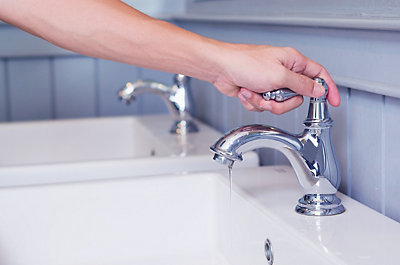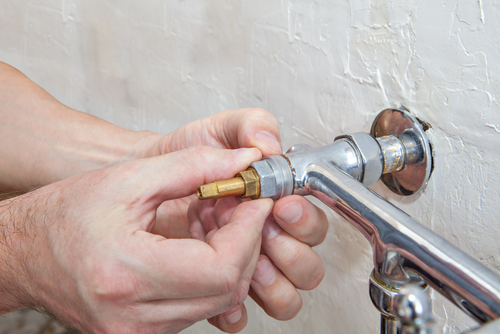Which It's Vital to Fix a Dripping Faucet
Which It's Vital to Fix a Dripping Faucet
Blog Article
They are making several good pointers on the subject of Should I Repair or Replace a Leaky Faucet? overall in this post beneath.

Dripping taps could look like a small aggravation, but their effect surpasses just the inconvenience of the noise. From drainage to incurring unneeded economic costs and health dangers, neglecting a trickling tap can bring about various consequences. In this short article, we'll delve into why it's important to address this usual house concern without delay and properly.
Wastefulness of Water
Ecological Effect
Leaking faucets contribute significantly to water wastefulness. According to the Epa (EPA), a single tap dripping at one drip per secondly can throw away more than 3,000 gallons of water each year. This not only pressures water resources yet likewise influences environments and wildlife based on them.
Step-by-Step Overview to Repairing a Dripping Tap
Tools Needed
Prior to trying to repair a dripping faucet, collect the essential tools, including a flexible wrench, screwdrivers, substitute parts (such as washers or cartridges), and plumber's tape.
Typical Tap Issues and Their Solutions
Recognize the type of faucet and the particular problem triggering the drip. Common problems include worn-out washers, corroded valve seats, or malfunctioning O-rings. Describe maker directions or on the internet tutorials for detailed support on repairs.
Financial Costs
Boosted Water Costs
Beyond the environmental effect, dripping taps can inflate water costs considerably. The built up wastage over time equates right into higher utility expenditures, which could have been stayed clear of with timely repair services.
Possible Residential Property Damages
Moreover, prolonged leaking can bring about harm to fixtures and surface areas bordering the tap. Water buildup can create discoloration, rust, and even structural issues if left neglected, causing added fixing prices.
Wellness Problems
Mold And Mildew and Mildew Development
The consistent presence of wetness from a leaking faucet creates an optimal atmosphere for mold and mold growth. These fungis not just compromise indoor air top quality but additionally pose wellness risks, specifically for individuals with respiratory system conditions or allergic reactions.
Waterborne Diseases
Stagnant water in leaking taps can end up being a breeding place for germs and other virus, enhancing the risk of waterborne illness. Impurities such as Legionella bacteria flourish in stagnant water, potentially resulting in severe health problems when ingested or breathed in.
Do it yourself vs. Specialist Fixing
Benefits and drawbacks of Do It Yourself Repair Work
While some may try to repair a dripping tap themselves, DIY repairs include their own set of challenges. Without appropriate understanding and tools, do it yourself efforts can intensify the concern or cause incomplete repairs, lengthening the trouble.
Benefits of Working With a Specialist Plumber
Hiring a specialist plumber ensures that the underlying root cause of the trickling tap is addressed efficiently. Plumbing professionals have the knowledge and devices to identify and repair faucet issues effectively, saving time and reducing the risk of further damages.
Ecological Obligation
Private Contribution to Preservation
Taking duty for taking care of leaking faucets straightens with wider efforts towards water conservation and ecological sustainability. Every individual's activities collectively make a significant influence on protecting priceless resources.
Lasting Living Practices
By prioritizing punctual repair services and adopting water-saving routines, individuals add to sustainable living techniques that benefit both present and future generations.
Safety nets
Regular Maintenance Tips
To stop dripping faucets, do regular maintenance such as cleaning up aerators, checking for leakages, and replacing worn-out components promptly. Furthermore, think about mounting water-saving tools or updating to more efficient fixtures.
Value of Prompt Services
Dealing with leaking taps as quickly as they're seen prevents further water wastage and prospective damages, inevitably conserving both water and cash in the future.
Impact on Residential Property Worth
Assumption of Well-Maintained Building
Keeping a residential or commercial property in good condition, including addressing upkeep problems like leaking faucets, boosts its regarded worth and value among possible purchasers or renters.
Impact on Resale Worth
Qualities with well-maintained plumbing components, including faucets, command greater resale values in the realty market. Dealing with trickling taps can add to a positive perception during building evaluations and negotiations.
Final thought
Resolving a dripping faucet goes beyond mere convenience; it's a crucial step towards preserving water, minimizing financial expenses, and safeguarding health and wellness and residential property. Whether through DIY repair work or specialist aid, acting to repair dripping taps is a little yet impactful means to promote accountable stewardship of sources and add to a much healthier, more sustainable future.
How to Fix a Leaky Faucet: Step-by-Step Repair Guide
A leaky faucet may seem like a simple annoyance, but if it's not fixed promptly, that leak could cost hundreds to potentially thousands. From water damage to mold, mildew, and high water bills, even a tiny leak can be catastrophic if left unattended. Damage like this can even affect the overall value of your home, so it's important to take the right approach for leaky faucet repair. You may need the help of a plumber in some cases, but we've got a few tips you can try on how to fix a leaky faucet before calling the pros.
Four Faucet Types
When you're learning how to fix a leaky faucet, the first step is knowing what kind of faucet you're working with! There are four common types.
Cartridge Faucets
Cartridge faucets come in one- or two-handled varieties. In one-handled cartridge faucets, hot and cold water combines in a single cartridge. In the two-handled versions, hot and cold water are controlled separately and mixed in the faucet.
Ball Faucets
Ball faucets have a single lever you push up and down to adjust the pressure and rotate to change the temperature. A slotted metal ball controls the amount of water allowed into the spout.
Compression Washer Faucets
They're the oldest type of faucet, but they're still used in many homes — especially older ones. Compression faucets have two separate handles that, when turned, raise or lower the washer that seals a water valve. This valve stops water from flowing through the faucet when it is turned off.
Disc Faucets
Disc faucets rarely need to be repaired due to their maintenance-free design. The water flow is controlled by two discs — the upper one raises and lowers against a fixed lower disc, creating a watertight seal. If your disc faucet starts leaking, you may need to replace the seals or clean residue buildup from the inlets.
Fixing a Leaky Faucet
Step 1: Turn Off the Water
Whether you're learning how to fix a leaky bathtub faucet or how to fix a leaky kitchen faucet, always turn off the water supply to your working area when you're fixing a leak. The last thing you want is a flood added to your list of things to fix.
Look for the shutoff valves below your sink or around the tub and turn them clockwise to stop the water flow. If your faucet doesn't have shutoff valves, you may need to turn off the water for the whole house. Check to make sure it's off by turning the faucet on. If nothing comes out, you're ready to start the repair.
Step 2: Take Apart the Faucet
How you disassemble your faucet depends on the type of fixture you have. You can use a flathead screwdriver to remove the caps on top of the handle or handles for cartridge and compression faucets. Inside, you should see handle screws. Unscrew these with a screwdriver to remove the handle.
Disc- and ball-style faucets will typically have an inlet screw near the handle, and removing that will reveal the interior of the faucet.
Detach the Valve Stem
For cartridge- and compression-style faucets, you'll see the inner valve stem or cartridge once you remove the faucet handles. If you have a compression faucet, unscrew the brass valve stem. If you have a cartridge faucet, pull out the cartridge. If your cartridge has been in place for a while, it may require some tools or extra force to remove it due to mineral deposits.
Examine and Replace Parts
Once you've removed the parts, check them out to confirm what needs to be replaced. You may see corroded rubber washers, O-rings, stems, or cartridges. On a ball-style faucet, check the seats and springs for damage.
If you need to repair a leaky disc faucet, check the inlet and seals on the lower disc.
Once you determine what parts must be replaced, visit your local hardware store. Bring the damaged parts with you to ensure you can purchase the correct components to replace them.
Clean Valves and Faucet Cavity
If you've removed a stem or cartridge, you may notice mineral buildup in the faucet's threads. Use white vinegar to clean the valve seat by soaking it for a few minutes, then scrub it away with a soft toothbrush and rinse with warm water. You can also clean the interior of the faucet in the same way.
Reassemble the Faucet
Once your faucet is cleaned and the required parts have been replaced, it's time to reassemble it. Put the pieces back together and slowly turn the water supply back on. Doing this slowly is crucial because too much initial water pressure can damage the new hardware you've just installed.
https://homewarranty.firstam.com/blog/how-to-fix-leaky-faucet

As a keen reader about Should I Repair or Replace a Leaky Faucet?, I thought sharing that information was worth the trouble. In case you appreciated our blog posting plz consider to pass it around. Kudos for your time. Revisit us soon.
Report this page